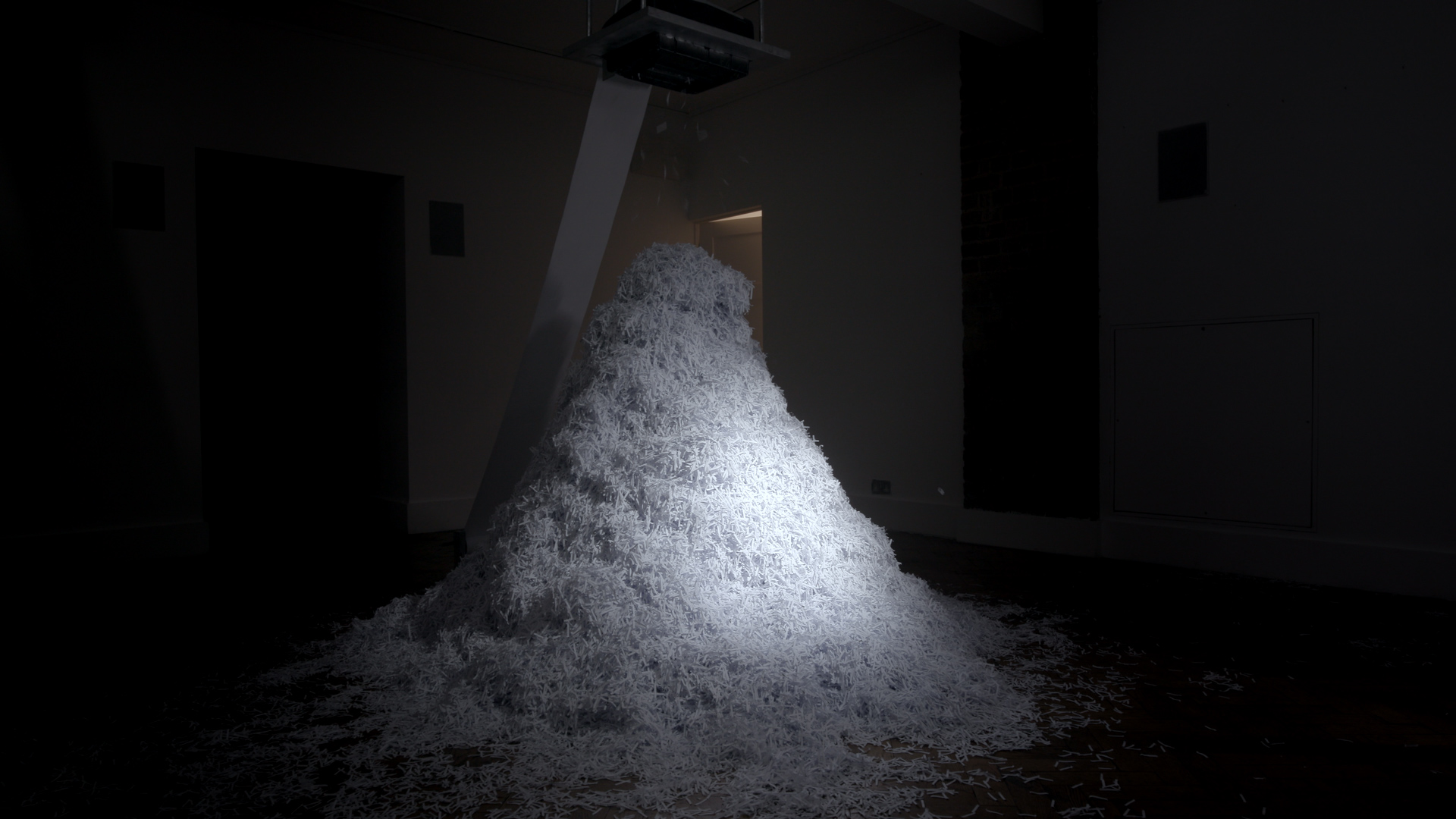Why I shred: The creative power of destruction
- Text by Rudy O'Brien
Cara Mills was staring down a deadline when a flash of inspiration struck. With her art degree at London’s Central Saint Martin’s coming to an end, pressure was building to let people see her work – the first significant opportunity for any young artist.
The only problem was that Cara’s imagination teemed with ideas. She’d dart between creative avenues: getting excited by some, growing bored with others, but never quite sure which one to pursue and which one to leave behind.
So instead of committing to one idea half-heartedly, she decided to make a work of art about the entire process: an artist’s journey between thinking and making.

After documenting every idea she had, Cara fed them all into a giant machine which methodically rated and then shredded each one – spitting them out like a shower of snowflakes.
The five-foot pile of plans that amassed at her feet effectively democratised Cara’s creativity. Reduced to little pieces, all ideas had become equal: the good and the bad, the practical and the unfeasible, the polished and the incomplete.
“I feel like I’ve created an ecosystem where I’ve turned my digital ideas into something tangible, which are then put back onto the online platform for other artists to be inspired by,” says Cara.

The shredding machine is a form of auto-destructive art: drawing from the concept that something can be destructive as well as creative.
At a time when our attention spans are being bombarded, when even a fertile imagination can feel overwhelmed or stumped, Cara’s work serves as a reminder that there are endless opportunities to hit the creative ‘reset’ button and start again.
Watch part 1 of Heightened Senses.
Canvas is a channel funded by the Arts Council dedicated to inspire young people through the arts. Find out more.
Enjoyed this article? Like Huck on Facebook or follow us on Twitter.
You might like

Inside New York’s underground ’60s & ’70s cruising scene
Cruising in the Shadows — For gay men in the pre-Liberation era, The Ramble in Central Park was a secretive hotspot to find love and connection. Arthur Tress was there to capture the glances, gestures and pleasures.
Written by: Miss Rosen

How pop music introduced queer culture to the mainstream
The Secret Public — Between the ’50s to the ’70s, pop music was populated with scene pushers from the margins. A new book by Jon Savage explores the powerful influence of LGBTQ+ folk.
Written by: Miss Rosen

Inside the weird world of audio porn
Porn without pictures — Storyline-driven and ethical, imageless erotica exploded during the pandemic. Jess Thomson speaks to the creators behind the microphones.
Written by: Jess Thomson

On a night out with the cast of Skins, Ewen Spencer captured millennial hedonism in all its unabated, messy glory
One Night in Watford — Commissioned to take promotional pictures for the generation-defining teen drama before it hit screens, the legendary youth culture photographer revisits the fun-fuelled evening, which was equal parts work and play, in his new photobook.
Written by: Isaac Muk

Largest-Ever Display of UK AIDS Memorial Quilt Opens at Tate Modern
Grief Made Visible — Comprising hundreds of panels made by lovers, friends and chosen family, the UK AIDS Memorial Quilt returns in full for the first time since 1994 – a testament to grief, friendship and the ongoing fight against HIV stigma.
Written by: Ella Glossop

The carnival and community of New York’s block parties
Soul of the Summer — Since attending his first street party in Crown Heights two decades ago, photographer Anderson Zaca has spent his summers travelling across New York’s five boroughs, documenting over 300 in the process.
Written by: Miss Rosen

